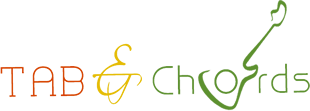Capo Chart and Chord Transposing Chart
| Capo Chart | |||||||
| Find the actual chord in the left column. The open chord is shown, where applicable, under fret number for capo placement. Capo 1 is the first fret, Capo 2 is the second fret, etc. |
|||||||
| Chord | Capo 1 | Capo 2 | Capo 3 | Capo 4 | Capo 5 | Capo 6 | Capo 7 |
| A | n/a | G | F# (Gb) | F | E | n/a | D |
| A# (Bb) | A | n/a | G | F# (Gb) | F | E | n/a |
| B | A# (Bb) | A | n/a | G | F# (Gb) | F | E |
| C | B | A# (Bb) | A | n/a | G | F# (Gb) | F |
| C# (Db) | C | B | A# (Bb) | A | n/a | G | F# (Gb) |
| D | n/a | C | B | A# (Bb) | A | n/a | G |
| D# (Eb) | D | n/a | C | B | A# (Bb) | A | n/a |
| E | n/a | D | n/a | C | B | A# (Bb) | A |
| F | E | n/a | D | n/a | C | B | A# (Bb) |
| F# (Gb) | F | E | n/a | D | n/a | C | B |
| G | F# (Gb) | F | E | n/a | D | C# (Db) | C |
| G# (Ab) | G | F# (Gb) | F | E | n/a | D | n/a |
| Chord Transposing Chart | ||||||
| Find the root key in the left column and jot down the numbers of the chords in the piece. Chords are shown by the number system, based on the scale. Now move to the key to which you wish to transpose and convert the numbers back to chords. Add modifications to the chord (i.e. major, minor, 7th, 9th, etc.) to match your source chords. Note: I’ve deliberately elected to go with whichever scale was least confusing, thus, Bb instead of C# (Same notes but Bb is less confusing than C#). |
||||||
| Key (1) | 2 | 3 | 4 | 5 | 6 | 7 |
| A | B | C# | D | E | F# | G |
| Bb | C | D | Eb | F | G | Ab |
| B | C# | D# | E | F# | G# | A |
| C | D | E | F | G | A | Bb |
| Db | Eb | F | Gb | Ab | Bb | C |
| D | E | F# | G | A | B | C |
| Eb | F | G | Ab | Bb | C | Db |
| E | F# | G# | A | B | C# | D |
| F | G | A | Bb | C | D | Eb |
| F# | G# | A# | B | C# | D# | E |
| G | A | B | C | D | E | F |
| Ab | Bb | C | Db | Eb | F | Gb |
| Note:
Composers aren’t restricted to any particular structure, they can use any chord |
||||||

